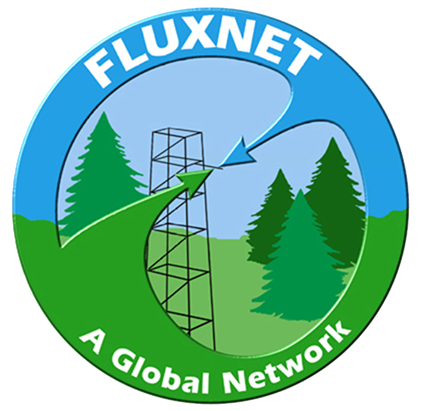Cheristy Jones, recipient of the 2024 Secondment Program award, has completed the program and wrote the following to share with the FLUXNET community:
_____________________
FLUXNET Secondment 2024 blog post
Cheristy Jones
“Has everyone been on a boat before?” The boat driver asked as I loaded my five suitcases full of science equipment onto the back of the small boat. I nodded as I climbed in, eager to get to the field site for the first time. But I had never been on a ride quite like this one. We pulled out of the marina in Nuuk, Greenland and almost immediately entered the Kobbefjord with steep, snowcapped peaks jutting out on either side. It was by far one of the most magical and breathtaking places I have ever been. In about 30 minutes, we pulled up to a small outcrop of rocks at the end of the fjord where the landscape flattened out a little. Then began the fun part of hauling the equipment up the hill.
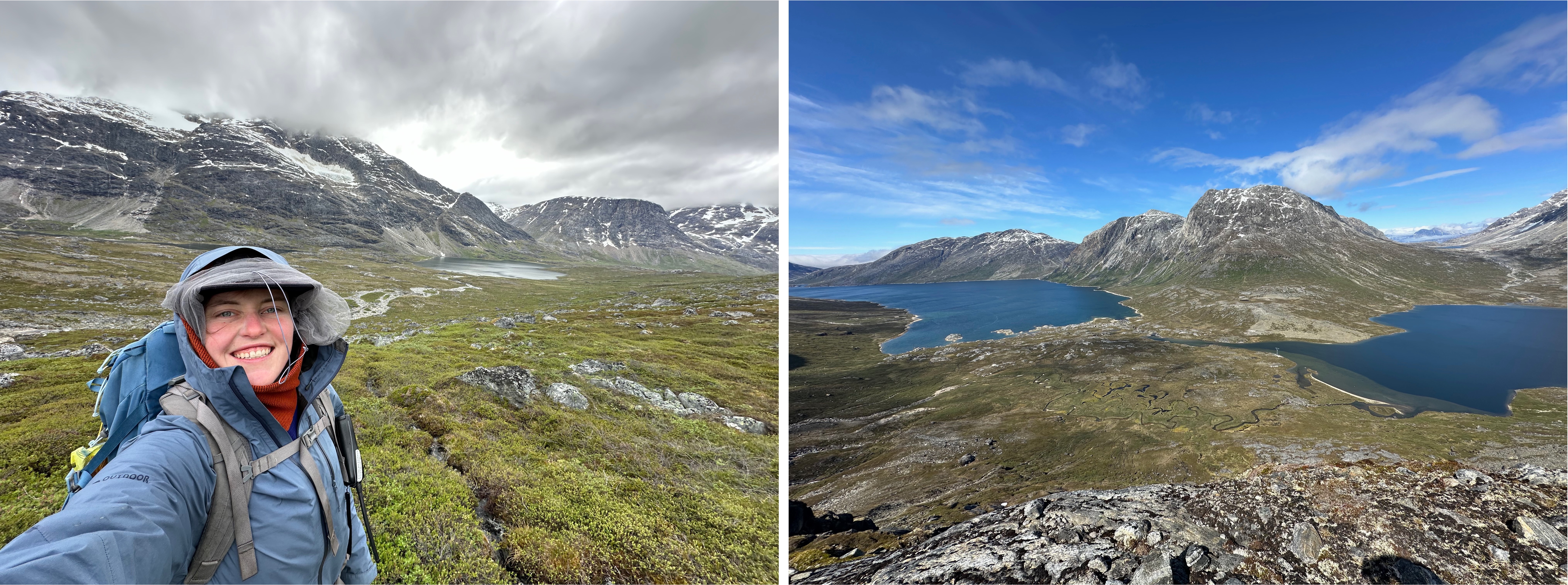
Left: Me looking out over one of the streams we sampled! The bug net was a must by the end of the trip. Right: The landscape we were sampling from the big lake on the right into the fjord on the left.
My name is Cheristy Jones and I am a third-year PhD student at the University of New Hampshire working with Dr. Ruth Varner. My research focuses on the lateral transport of carbon from land to water, usually from groundwater, and linking this transport to methane (CH4) and carbon dioxide (CO2) emissions across Arctic landscapes. This information is crucial for better predicting how greenhouse gas emissions may change in the future.
For my Secondment, I collaborated with Dr. Efrén López-Blanco at Aarhus University and the Greenland Institute of Natural Resources. Dr. López-Blanco works with the eddy flux tower systems maintained by the Greenland Ecosystem Monitoring program at the Kobbefjord Research Station in Greenland. The goal of our study was to link the long-term terrestrial flux tower CO2 and CH4 measurements with aquatic carbon fluxes in order to better understand lateral carbon flux across the landscape and gain a holistic understanding of the carbon balance in the Kobbefjord catchment.
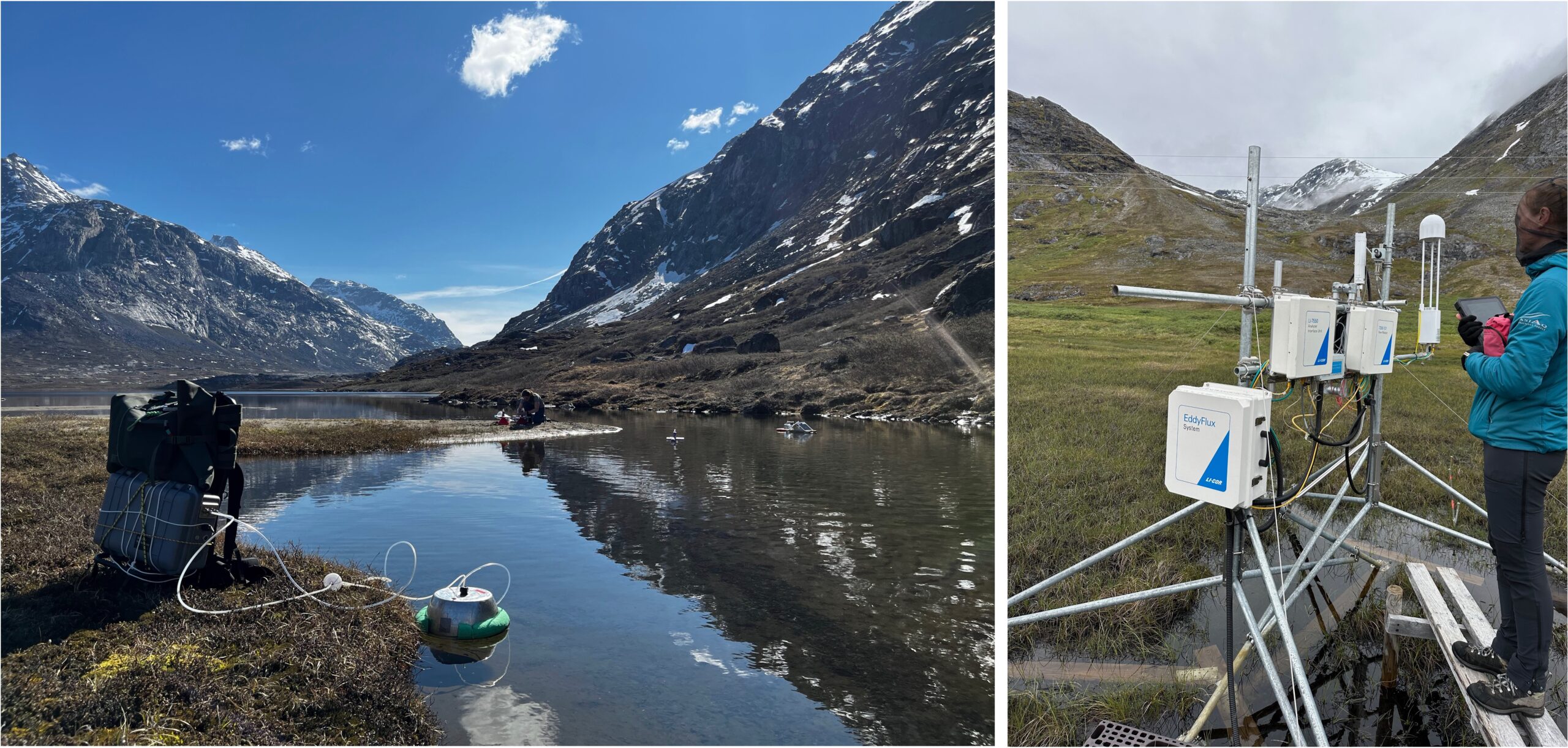
Left: Dr. López-Blanco taking a diffusive flux measurement while I collect water samples. Right: Learning how to maintain the eddy systems and download data with the help of the wonderful field technician Karoline!
The theme over the next month was carbon fluxes…measuring all of the carbon fluxes! Every week, we would travel by boat to the Kobbefjord Research Station where we would stay for 3 or 4 days over the month of June. We sampled two different streams in the catchment that were near two eddy flux towers, one that flows through a heathland and one that flows through a fen, that both drain into a glacial lake every ~200m. This sampling involved taking water samples to look at dissolved carbon, dissolved CO2 and CH4, and taking emissions measurements using a floating chamber and a portable gas analyzer. I also learned about all things eddy flux tower, from their footprints, to maintenance to how to download the data. It required a lot of hiking but with the incredible landscape surrounding us there wasn’t much to complain about. Once the field sampling was complete, we returned to Nuuk for a few days to process the samples and restock on food before heading out again.
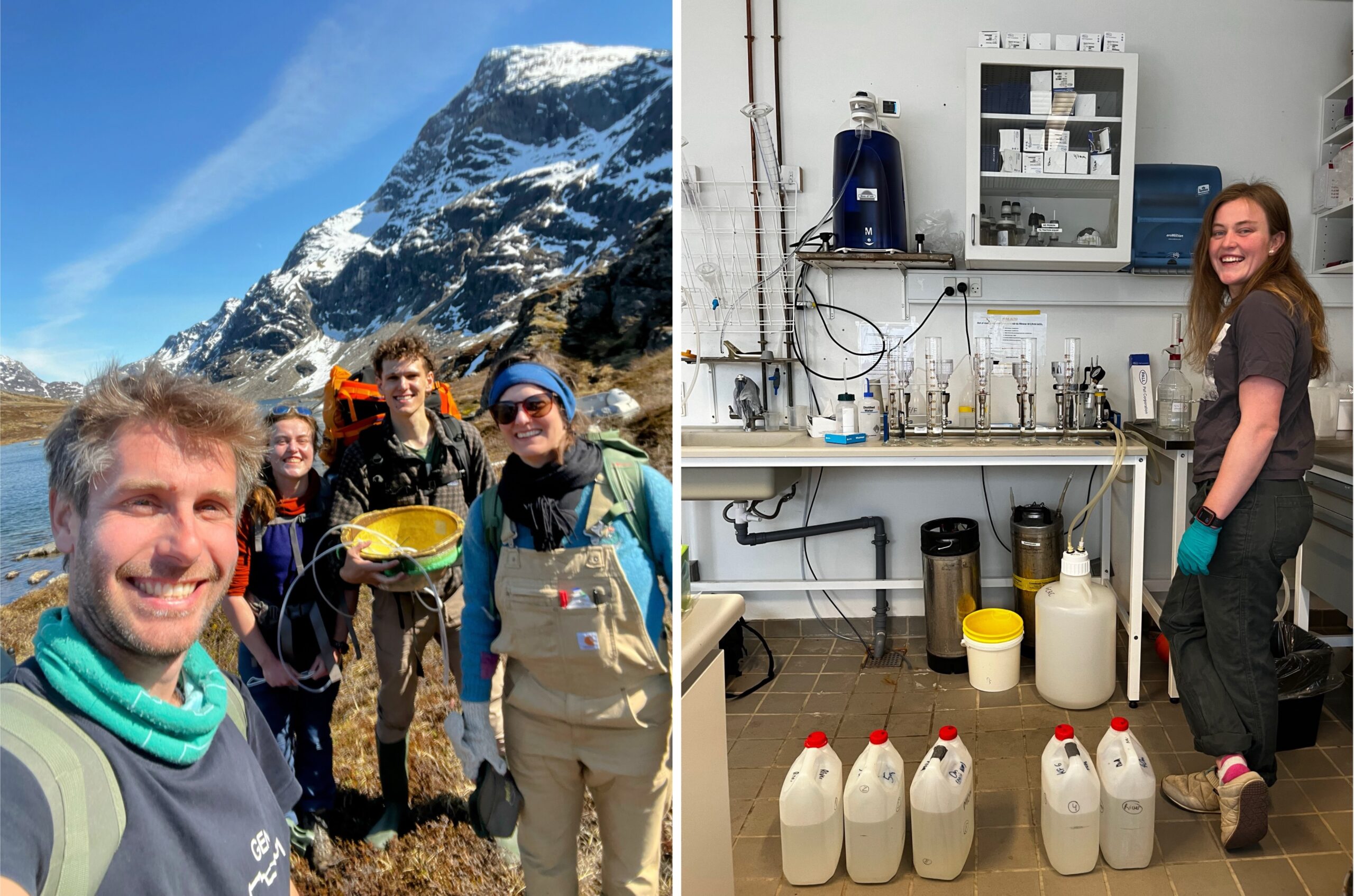
Left: The whole land to freshwater crew! From left to right: Dr. Efrén López-Blanco, me, Dr. Johnna Holding, and Henry Henson. Right: Learning new techniques in the lab from Dr. Holding!
In addition to our project, I was also able to work alongside Dr. Johnna Holding and PhD student Henry Henson who are part of the EU GreenFeedBack Project, which aims to understand the carbon balance of the fjord system. Not only did I enjoy cooking our pasta dinners together with them at the station each night, but I also was able to learn new techniques that they used for water sampling and analysis.
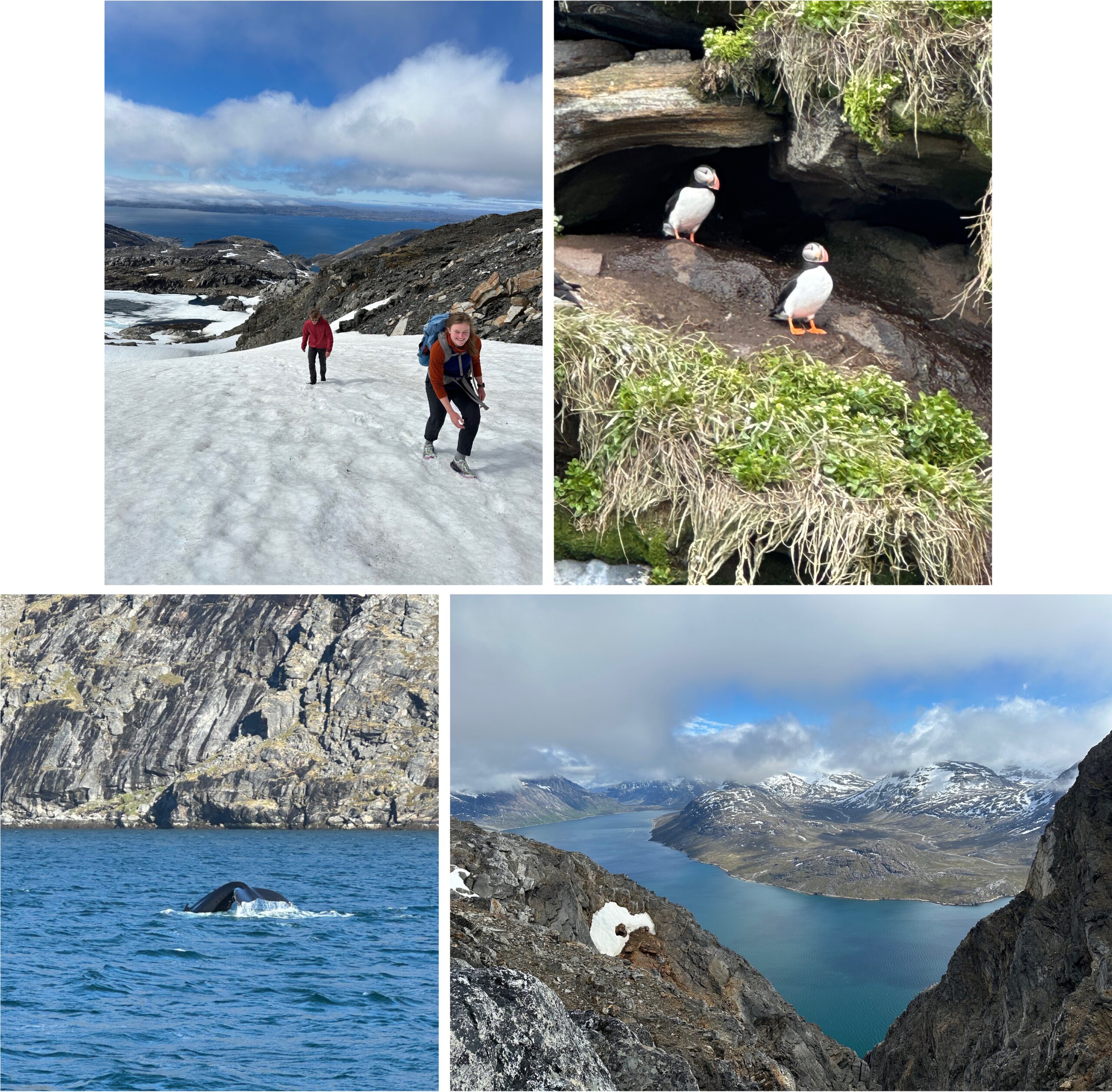
Top Left: Hiking to the top of the Nuuk lookout with Henry and Mads! Still plenty of snow to sled down even in June! Top Right: A puffin!!! My first time seeing them! Bottom Left: A whale from our whale watching trip! Bottom Right: The view from the lookout hike that looks into Kobbefjord.
But, it was not all work! I was able to hike around the beautiful fjord systems with Henry and we even took a whale and puffin watching boat tour which was an incredible way to experience Greenlandic nature. We also got to partake in the Greenland National Day celebration filled with BBQing and dancing.
Now, back in the US, I am making my way through the EddyFluxPro R package to analyze the flux data (albeit with a less exciting backdrop than looking out over the fjord). I plan to present the results of this work at the American Geophysical Union Fall Meeting in 2024 and incorporate the findings into a peer reviewed publication as well as my dissertation.
I gained many new skills over my Secondment, including growing my skills in measuring greenhouse gas fluxes to include flux tower data which will increase the scope of my current landscape work. However, I am most excited about the connections I made during this experience. I hope to continue our collaborations in the future and can’t wait to see what other projects grow from this experience. I am extremely grateful to FLUXNET for this opportunity and would like to thank my advisor, Dr. Ruth Varner, for supporting this idea and to Dr. Efrén López-Blanco for being so enthusiastic about collaborating on this work. This experience has no doubt had a lasting and positive impact on my career.
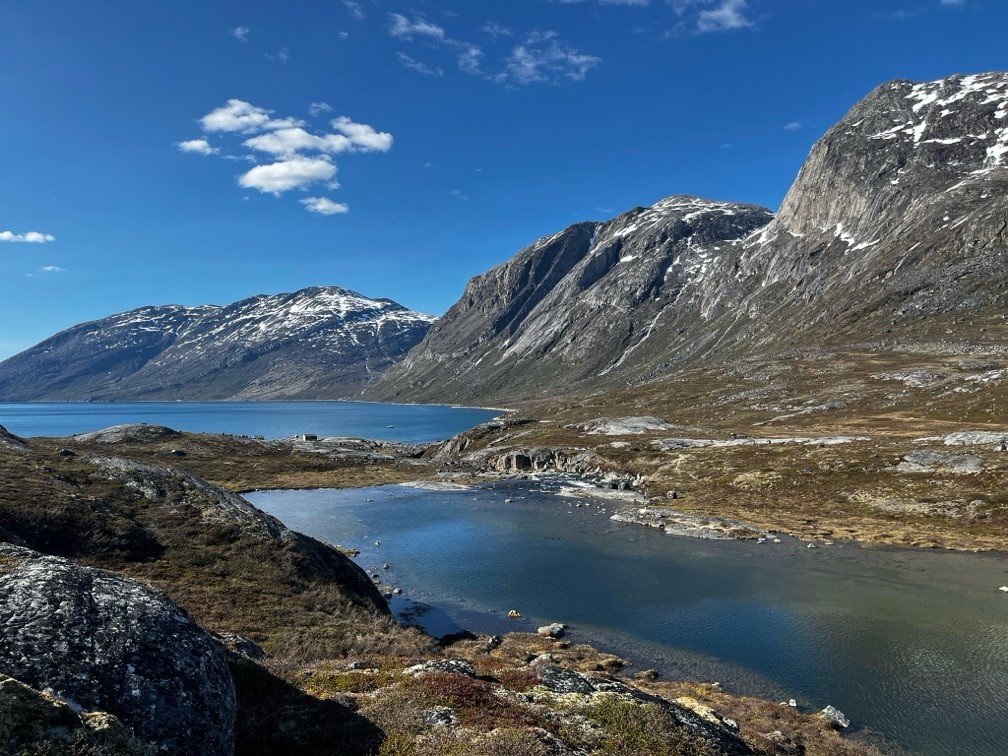
The top of Qaqqarsuaq, the backdrop of Kobbefjord.
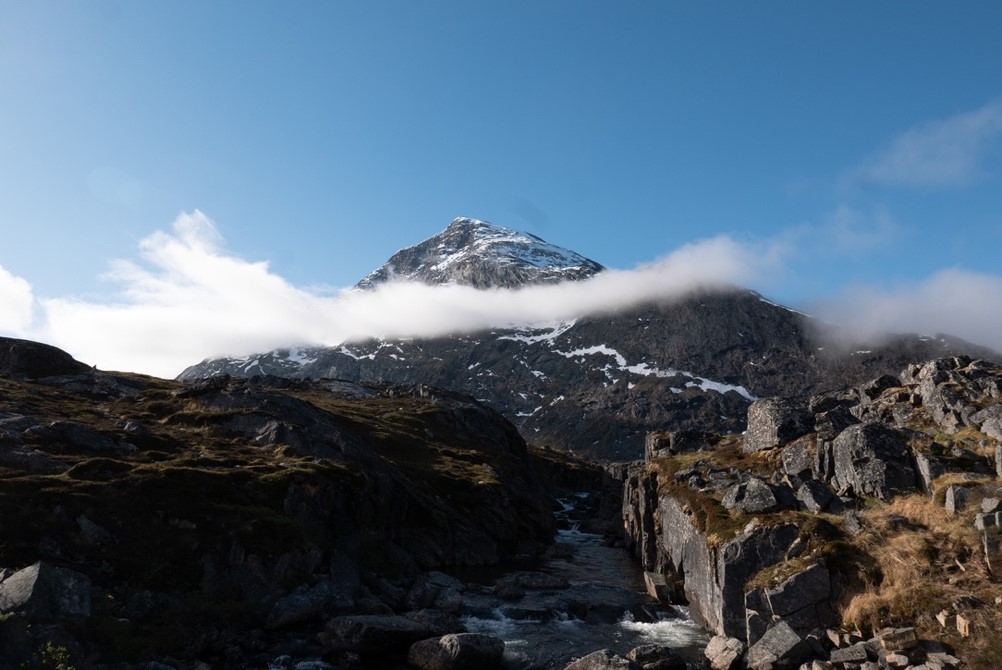
The outlet of the catchment and the research station.
